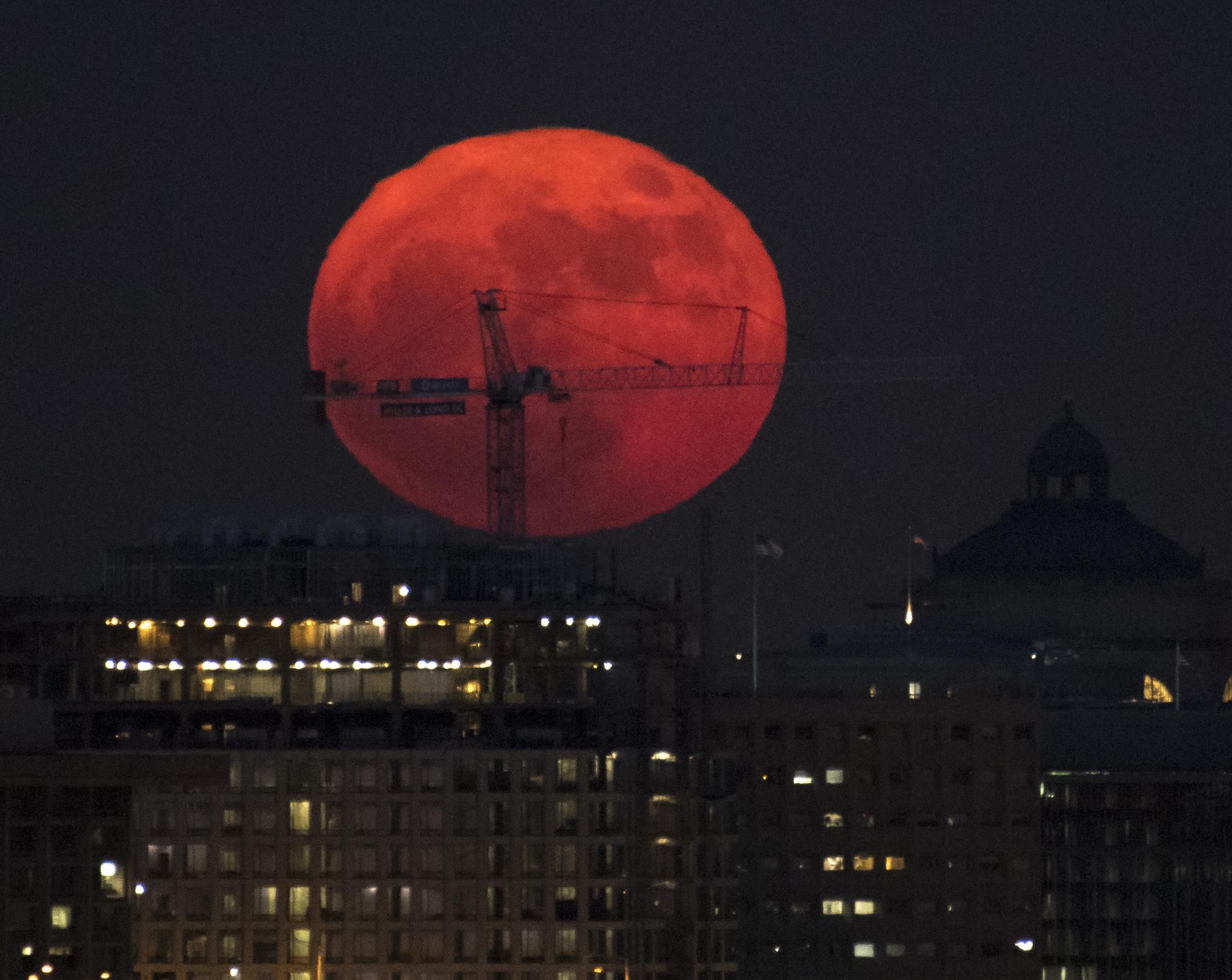
Tuesday's full snow moon was also special because it was a supermoon, meaning it appeared larger than the moon usually does most other months when it reaches fullness. The moon was the second of the year, earning it the name "snow moon" or "hunger moon." Those names come from the fact that the moon was full in February, a time when some of the heaviest snow typically happen.
But the moon was also a supermoon. While the moon wasn't actually any bigger than it usually is when it's full, it was a bit closer than usual to Earth, giving the illusion that it actually is bigger.
This is called "perigee," the term for when the moon is at the point in its orbit closest to the Earth. NASA shared a moving image of the moon's orbit to help illustrate the movement of the moon that was causing it to look larger and brighter.
Today’s full Moon is also… wait for it… a supermoon! The Moon is close to its perigee, which is the closest point in its orbit to Earth. This means this full Moon appears brighter and bigger than other full Moons throughout the year. https://t.co/OuPuAUfwE8 pic.twitter.com/OFgQtE6xWG
— NASA Moon (@NASAMoon) February 19, 2019
Super Moons are a natural occurrence in the moon's orbit around the Earth. When the moon is opposite the Earth, so that it's fully reflecting the sun's light, those of us on the Blue Planet see a full moon. But the moon is also orbiting in an ellipse, or a sort of oval shape around the Earth and one point of that oval puts the moon closer to the Earth than another side of the oval might.
These points are called apogee and perigee. Apogee is when the moon is as far from Earth as it gets, a full 405,500 kilometers from the Earth, according to NASA. When the moon is in perigee, what most people call the supermoon, it's just 363,300 kilometers away from the Earth instead, according to NASA.
When the moon is at its largest, it can appear about 14 percent larger, which can be difficult to detect with the naked eye. "Keep in mind that a 14% increase in the apparent size of something that can be covered with a fingernail on an outstretched arm won't seem significantly bigger," said NASA.
The brightness of the moon also increases when there's a supermoon. It can increase up to about 30 percent because the moon is closer to the Earth, according to NASA.
The moon will appear brighter and bigger Tuesday night but only marginally, so most people might not realize it's a supermoon unless they've read about it beforehand. Either way, the full snow moon will appear high in the sky, nice and full.
Uncommon Knowledge
Newsweek is committed to challenging conventional wisdom and finding connections in the search for common ground.
Newsweek is committed to challenging conventional wisdom and finding connections in the search for common ground.
About the writer
Nina was a breaking news reporter. She previously worked at Business Insider, The Boston Globe, and Boston.com.
To read how Newsweek uses AI as a newsroom tool, Click here.








